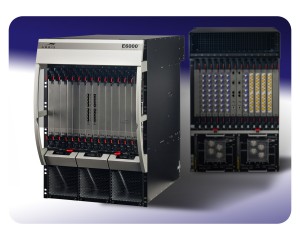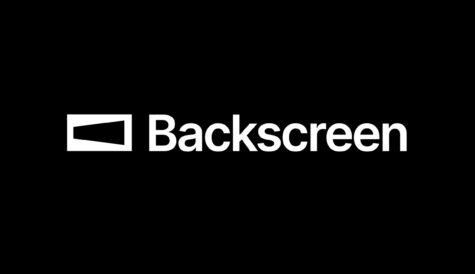Cable edges to an IP future
Cable operators have long seen the advantages of delivering TV services via IP and merging their DOCSIS and video platforms to give maximum flexibility, but they are taking a pragmatic approach. Stuart Thomson reports.
 It has long been received wisdom that cable operators want to move to an all-IP architecture. There are numerous potential benefits of moving to IP: operators could reduce costs by combining their data and TV platforms; and IP is seen as a desirable platform for video services as it will enable them to deliver multiroom and multiscreen services much more economically.
It has long been received wisdom that cable operators want to move to an all-IP architecture. There are numerous potential benefits of moving to IP: operators could reduce costs by combining their data and TV platforms; and IP is seen as a desirable platform for video services as it will enable them to deliver multiroom and multiscreen services much more economically.
A full migration to IP would also enable operators to deliver a much more sophisticated user experience to their core TV subscribers than is often possible today. In an age when consumers are increasingly familiar with new ways of navigating and consuming video via iPads and the web, the kind of search and navigation functionality provided by legacy middlewares is increasingly seen as clunky, old-fashioned and difficult to update or personalise.
Clearly, the advantages conferred by an all-IP network are considerable, but cable service providers have to decide what the best step-by-step approach is to achieving it, while supporting their existing investment in legacy set-tops and infrastructure.
For the last three years the Comcast-driven Converged Cable Access Platform (CCAP) has been at the centre of the debate about next-generation headend architecture for cable. CCAP is essentially a headend device whose specifications were designed by US cable operators, led by Comcast. The specification was designed to support growth in the number of QAM channels used for narrowcast services such as video-on-demand as well as IP-based video services and network DVR. CCAP devices – which could sit either at a central headend or at a hub site – were intended to provide a higher order of density in terms of QAMs per RF port and ports per chassis than legacy CMTS and edgeQAM equipment, in order to accommodate the narrowcast explosion while saving on space and power. In addition, they were designed to combine edgeQAM and CMTS functions in a single device and to remove the silos into which IP DOCSIS and QAM video traffic were divided, enabling operators to mix and match QAM and IP traffic. The ability to dynamically allocate bandwidth between video to the DOCSIS data channels would give operators maximum flexibility in meeting changing patterns of demand. However, since the CCAP specification was designed, a number of things have happened that may have subtly shifted cable operators’ priorities, according to Todd Kessler, Arris’s vice-president of CMTS product management. Operators are interested in migrating to a converged infrastructure, but not necessarily immediately.
“They are not implementing one converged piece of hardware that does both,” says Kessler. “Right now operators are investing in next-generation technology.”
‘CCAP-ready’ equipment could provide benefits in terms of savings in power and space ahead of any integration of the DOCSIS and video platforms. Kessler points out that available DOCSIS downstream bandwidth has grown considerably since the CCAP initiative kicked off. “The number of downstream [channels] per node is increasing so much that even without convergence you can get benefits of lower power consumption and lower cost per downstream,” he says. The emphasis on additional data capacity led Arris to develop its E6000 converged edge router as a DOCSIS platform initially.
In the longer term, says Kessler, the transition to a converged platform will still happen, but the timing is not yet clear. Operators are also looking ultimately to migrate their video platforms entirely to IP in the long term, he points out.
At the same time, operators are looking to migrate video to IP for a host of reasons – not only to deliver a converged video service to multiple IP-enabled devices, but also to eliminate as far as possible the need to support legacy set-tops, often with inferior middleware and a relatively basic user experience. Increasingly they are looking to benefit from adaptive bit-rate technology to deliver a smoother experience. Other factors than market requirements can also act as a brake on the adoption of new technologies. For Nabil Kanaan, senior director of product marketing at RGB Networks, which originally developed a physical shelf CCAP product but decided to discontinue it, there is often a lag between decisions being taken by service providers at a strategic level and their implementation in practice. “There are well established procedures for the deployment of edgeQAMs and DOCSIS equipment, and changes need to percolate through,” he says. Existing edgeQAM and DOCSIS equipment vendors also had an interest in maintaining their established businesses and were able to boost interest in legacy products by reducing their prices, he suggests.
The right architecture
Currently, says Kanaan, most operators are deploying straight DOCSIS gear to expand bandwidth in the network, rather than looking to converge the DOCSIS and QAM platforms. Nevertheless, he says, CCAP is “the right architecture for cable” because it will enable them to dynamically change the capacity allocated to IP. Currently, operators are working in silos, so they are more or less bound by a pre-decided frequency plan that is only changed when they implement a further node split. “The question really comes down to the particular operator’s situation. It comes down to the particular facility they own and how much data is being put to a particular serving area,” he says. If operators have to split nodes while using small, cramped facilities, the benefits of merging the two platforms may be incontestable.
Operators are increasingly delivering IP video over the DOCSIS pipe to iPads and other devices in the home. As on-demand viewing migrates to IP-enabled devices, operators may find themselves with QAM-based video-on-demand services that no-one – or at least far fewer people – are actually using , while more and more demands are placed on the DOCSIS platform.
“With CCAP you can give up some of that VOD bandwidth to IP. That’s one of the key benefits, but until operators deploy CCAP they are stuck with the siloed [approach]. They need to do more node splits to release capacity on the IP side – but that doesn’t do much for the video side,” says Kanaan.
Kanaan believes the problems faced by operators are likely to get worse before they get better. Some operators have opted for alternative ways to claw back bandwidth, such as Comcast’s decision to deploy digital-to-analogue converters to all subscribers in order to take out the analogue tier completely. Legacy solutions to the bandwidth crunch such as switched digital video (SDV), which enables operators to deliver less popular channels as switched on-demand services over QAM channels, are still in play in the US.
However, SDV has proved challenging to implement in terms of properly analysing user patterns and deciding which channels to put on the switched tier. “What we see is that those that have gone down the SDV path love it but the others want to stay clear. It’s growing incrementally with those that have chosen to get into it in the first place,” says Kanaan.
While the road to CCAP has proved to be longer than perhaps was envisaged, some operators have moved towards full integration of DOCSIS and video platforms, according to John Chapman, chief technology officer, cable access business unit, Cisco Systems. “We have customers that are mixing DOCSIS and video on a single platform,” says Chapman, who adds that there is “a lot of work involved” in creating next-generation platforms. Rather than wait for devices that combine video and data in a single unit, operators are looking for solutions now to ease their bandwidth challenges. “DOCSIS is a high-growth industry. The overall feeling now is that the next generation of boxes will help with DOCSIS [first] and that’s where most of the money needs to be spent, with video added second, although it’s not a universal opinion across the industry,” he says. The industry is now producing very high-density edgeQAMs, with work ongoing on CMTSs. Operators, he says, all see a need to migrate to IP video but “they don’t feel a need to race to get there”. The MPEG Transport Stream is a tried and trusted technology. Video is being simulcasted to reach iPads and other devices, but the bandwidth demands are relatively manageable.
In the longer term, the logic of managing the network efficiently will determine the convergence of video and IP. Chapman says that the increasing density of QAMs in a single piece of hardware means that there are now devices capable of delivering 150 6MHz channels or (in Europe) 120 8MHz channels. Ultimately, failing to merge the DOCSIS and video platforms will lead to “stranded resources” that lie idle as demand for DOCSIS channels accelerates. Meanwhile, Cisco’s investment in the Modular CMTS (M-CMTS) technology already enables operators to mix and match functionality in the CMTS and edgeQAM.
Service provider priorities
The CCAP specification is now more or less set. However, given the differing priorities of service providers, there are differences in emphasis between different vendors’ implementations. “The spec is very broad and covers a wide range of functionality,” says Kessler. “Vendors will choose which areas to focus on and then evolve towards an all-encompassing functionality. There is no single step from zero to full compliance.”
The widespread adoption of DOCSIS 3.0 has been central to the explosion in cable operators’ bandwidth capability. Operators are now also looking to the next stage with the implementation of DOCSIS 3.1, and this will be incorporated into CCAP in time.
A slackening in pressure for full convergence notwithstanding, operators are investing in ‘CCAP-ready’ platforms, says Kessler. As operators add downstream channels per serving group of homes, they increasingly need denser platforms to support the expansion in capacity to avoid the need to invest in new facilities. “I think CCAP is up there in terms of priorities. Home and headend technologies are both important to operators. Most operators need more bandwidth and don’t have much space and that drives support for high-density next generation platforms at the headend,” he says.
Operators are meanwhile delivering more and more of their own services, such as TV Everywhere, over IP. Adaptive bit-rate streaming has eased the path for IP video services, while additional upstream bandwidth demands have been ameliorated by innovations such as ‘just-in-time’ packaging from the likes of RGB Networks, which delivers a mezzanine video format that can be converted to the different adaptive bit-rate formats at the edge of the network.
Kanaan suggests that the main challenges with adaptive bit-rate delivery for service providers is not last-mile bandwidth but the large number of players and consumer electronics devices to which the services are delivered. There are multiple challenges. Certification is required from Apple for players for iOS devices. Service providers will need to offer customer support for multiple players on multiple devices. Marketing departments will want support for the maximum number of devices in order to maximise reach. “It is problematic – it is new for cable, which has been able to control the service it provides quite well,” says Kanaan. With the likes of Apple and Google more focused on innovation in the consumer space than the needs of cable operators for predictable and coordinated software updates, this is a problem that is unlikely to go away any time soon.



